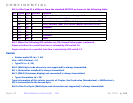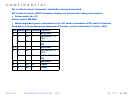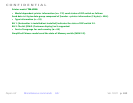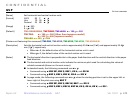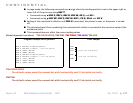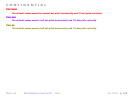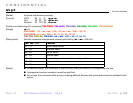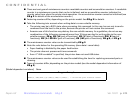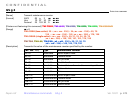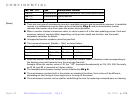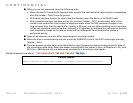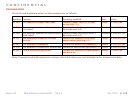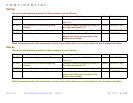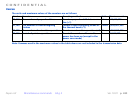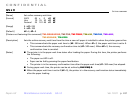
CONFIDENTIAL
Paper roll Miscellaneous commands GS g 0
Ver. 10.01 p. 474
■ There are two types of maintenance counters: resettable counters and accumulation counters. A resettable
counter is a maintenance counter that can be initialized, and an accumulation counter indicates the
counter value from when the printer starts operation. An accumulation counter cannot be initialized (see
GS g 2 for details of the accumulation counter.)
■ Featuring counters differ, depending on the printer model. See GS g 2 for details.
■ Take the following into account when writing data to a non-volatile memory.
• The printer may be in BUSY state when processing this command. In this case, be sure not to send a
command from the host to the printer, because the printer will not receive the command.
• Excessive use of this function may destroy the non-volatile memory. As a guideline, do not use any
combination of the following commands more than 10 times per day for writing data to the non-
volatile memory: FS q, GS ( A (part of functions), GS(C (part of functions), GS(E (part of
functions), GS ( L / GS 8 L (part of functions), GS(M (part of functions), GS g 0, or FS g 1.
■ The maintenance counter value can be transmitted by GS g 2.
■ Note the rules below for the operating NV memory (store data / cancel data):
• Paper feeding is disabled by the paper feed button.
• The printer does not process real-time commands.
• Even if “ASB is enabled” is specified, the printer does not send ASB status.
■ The maintenance counter value can be used for establishing the time for replacing consumed parts or
cleaning.
■ Types of counters differ, depending on the printer models (see the model-dependent information of
GS g 2).
[Model-dependent variations] None
Program Example
PRINT #1, CHR$(&H1D);”g0”;CHR$(0);CHR$(11);CHR$(0); ← Initializes print character counter



